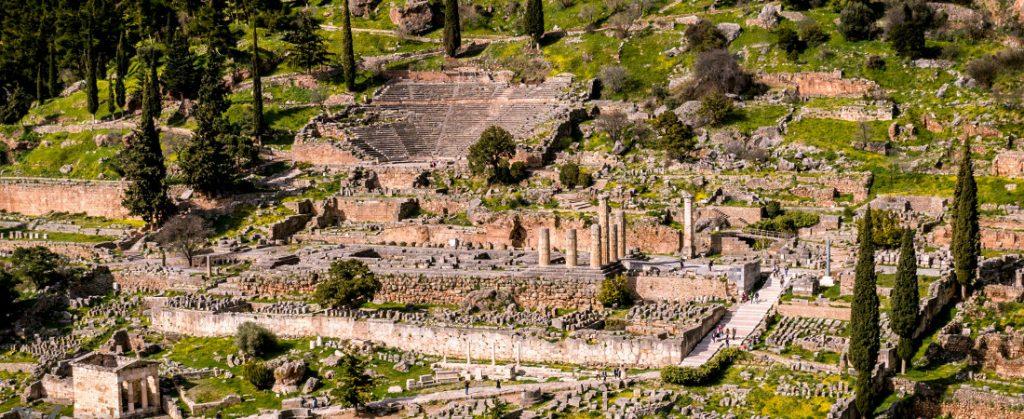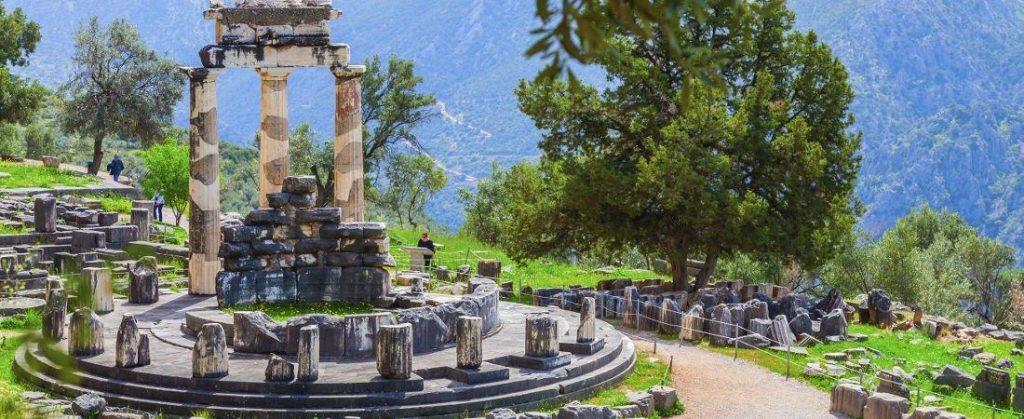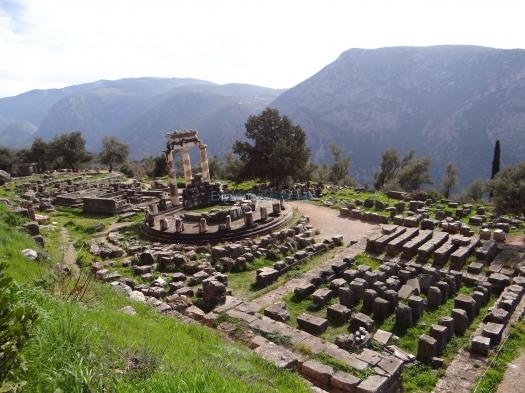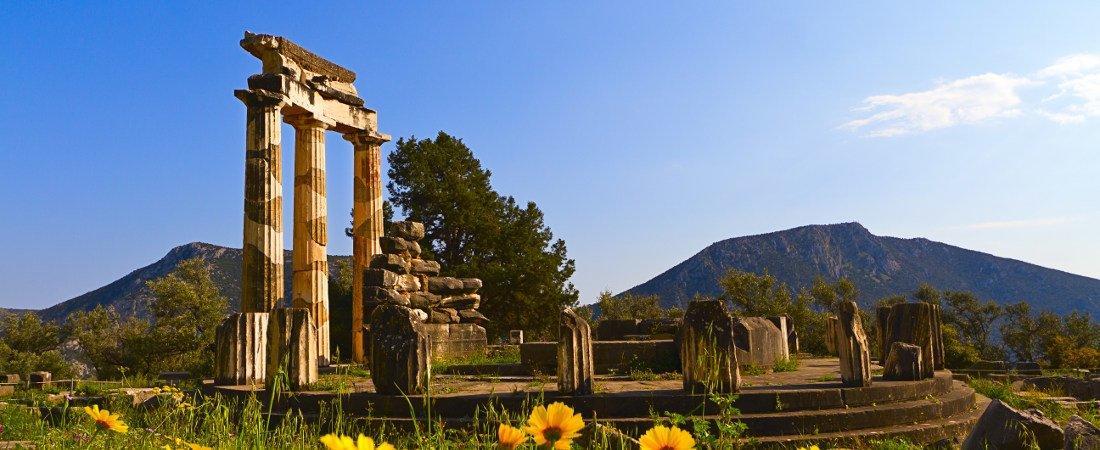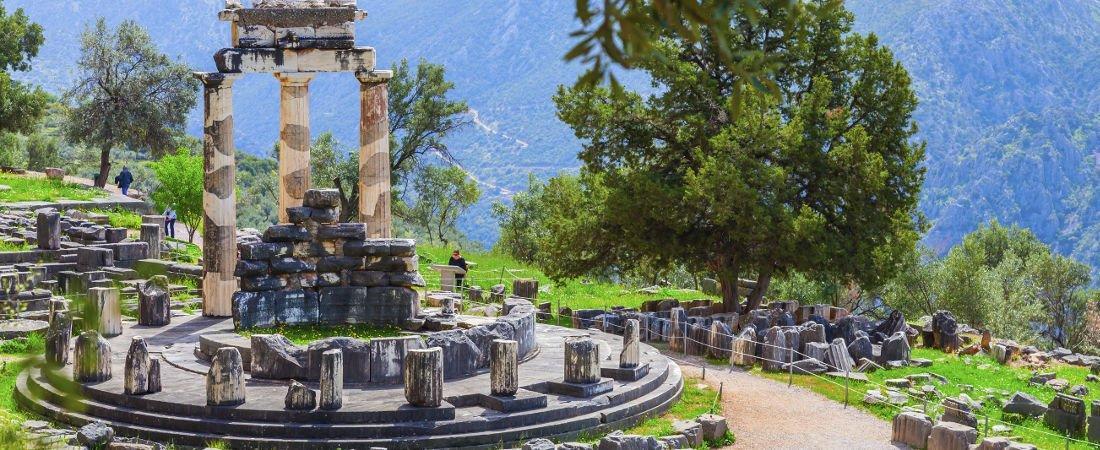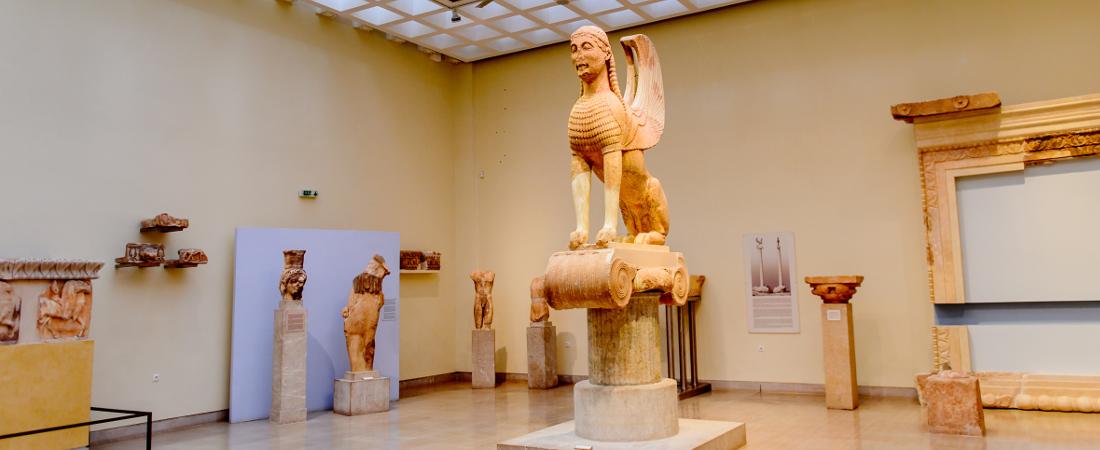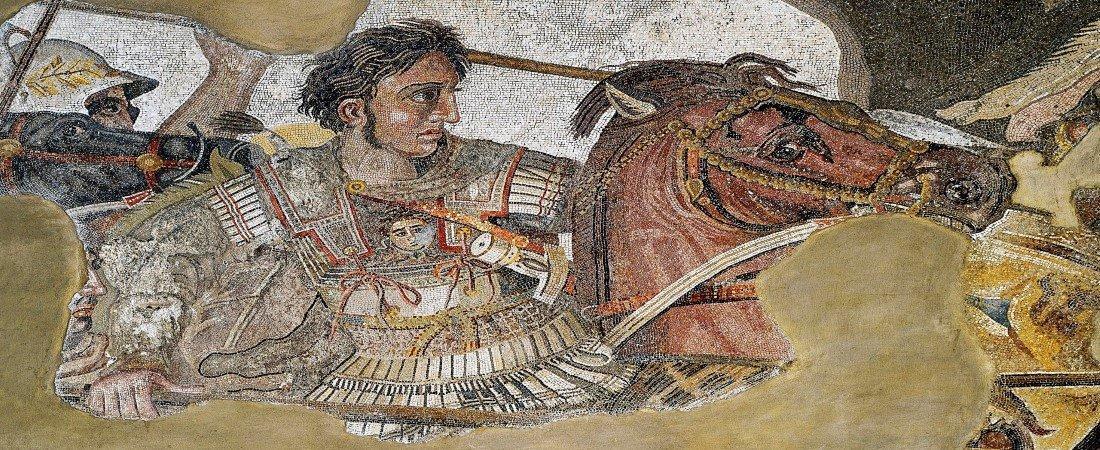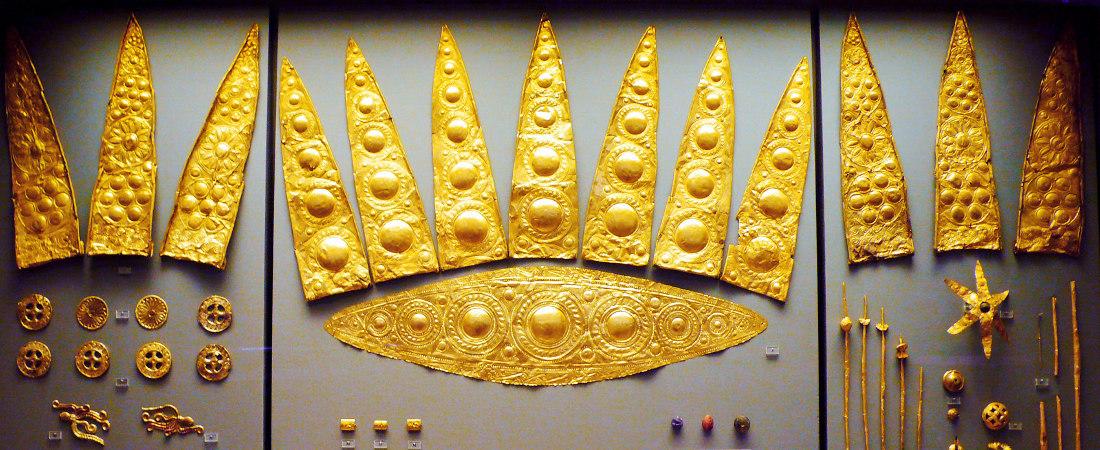Delphi Archaeological Site
From Mycenaean Period, it was called Pytho by Homer
Delphi Archaeological Site was one of the most sacred places of the ancient world. It is an enchanting site, situated in the breathtaking surroundings of Mt. Parnassus, where Pan and the Nymphs lived. Furthermore, the Ancient Greeks believed that the Delphi Archaeological Site was the “Center of the World”.
For this reason, we arrange various tours through the Delphi Archeological Site, such as our 1-day tours.
Although the Delphi Archaeological Site had been dedicated to many deities, Apollo is the most connected God to the place. According to Mythology, Apollo killed the Guard of the Site, the Monster Python.
After that, the Pythian Games were held every 8 years to commemorate the event. Later, they were held every four years and were mainly musical competitions. The winner was crowned with a wreath of Laurel, the special tree of the God Apollo.
Delphi Archaeological Site, defined as the center of the World by Zeus. According to the Myth, he let his two eagles fly around the earth and the point where they met would be the center of everything. As a result, the people decided to place a stone at that point. They named it Omphalos (Navel), which you can see in the Museum of Delphi.
The Museum of Delphi Archaeological Site, one of the most important museums in Greece, exhibits the history of the Delphic sanctuary. Furthermore, its rich collections are primarily sculptures and minor objects donated to the sanctuary. These reflect its religious, political, and artistic activities. Two of the most famous artifacts are:
•Firstly, the Kouros Statues of the Archaic Period, known as Kleovis and Biton.
• Secondly, the Large Sphinx of Naxos sitting on an Ionic column about 10m tall.
Myth and Legend
According to the myth, Zeus got sick and tired of humanity and started the universal flooding. There was a man, Deucalion, who was warned and built an ark. The flood drowned the earth, but Deucalion and his wife were safe. Finally, when the water started sinking, they landed on the top of Mt. Parnassos.
After all, Deucalion went to the oracle to ask what was next. The oracle told him to throw the bones of the earth behind him. Pretending to be bones, he took some stones and threw them over his shoulder. Consequently, the new human race grew out of them. Deucalion had a son called Hellen, whose descendants would be the first Greek tribes.
Heracles also came to Delphi to steal the tripod of Pythia. Although he failed, the people respected him so much that they decided to build a temple in his honor.
Finally, the God Dionysus also left his mark here. Although he was not always present, he used to rule here when Apollo went away.
Past Retainers
Note worthily, Delphi was organized and controlled by the 12 City-States, which formed the Amphictyonic League. They rebuilt the place numerous times: in 528 BC, after a terrible fire; and in 373 BC after an earthquake. As you can see, the location of the Delphi Archeological Site contains inspiration for an abundance of stories and myths.
Treasuries of Athena
It was built to commemorate the victory at the Battle of Marathon, and it is decorated with large number of votive statues. The Greek City-States called it “Treasuries” because it hold the offerings made to God Apollo at the Delphi Archaeological Site. Additionally, among these Treasuries, we can find the Siphnian Treasury, dedicated by the City of Siphnos; the Sikyonians, the Boetians, and the Thebans.
Through the protection of the Amphictyonic League, Delphi Archaeological Site came to function then as the de-facto Central Bank of Ancient Greece.
See the Delphi Archaeological Site with one of our tours:
- 1 Day Tour To Delphi and Visit of Arachova Village
-
2 Day Tour to Delphi Archaeological site and visit of Meteora Monasteries
-
3 Day Tour To Epidaurus, Mycenae, Nauplio, Olympia and Delphi Archaeological Sites
-
2 Day Tour to Delphi Archaeological site and Visit of Arachova
-
3 Day Tour to Archaeological Site and Museum of Delphi and Meteora Monasteries
-
5 Day Tour To Epidaurus, Nauplion, Mycenae, Olympia, Delphi and Meteora Monasteries
-
8 Day Combined Tour Package to the Islands and Historical Sites of Greece
-
4 Day Tour To Epidaurus, Mycenae, Nauplion, Olympia, Delphi and Meteora Monasteries


